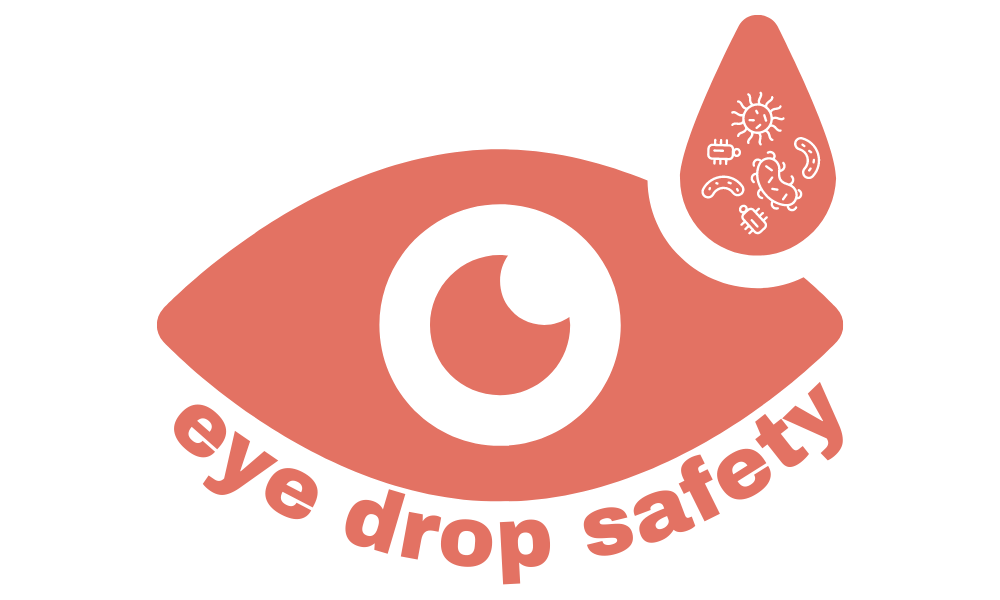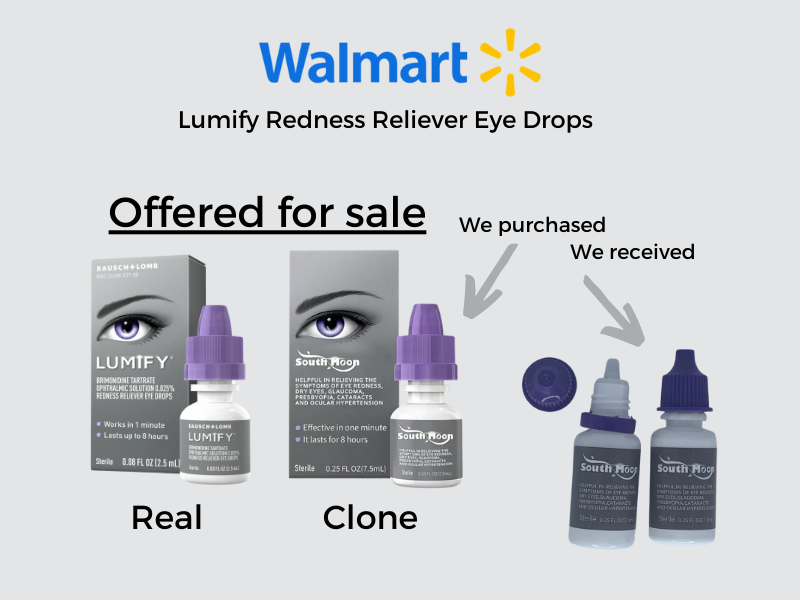No seller scrutiny
E-commerce giants have opened the floodgates for eye drops of unknown origins.
No vetting
Historically, e-commerce has treated non-prescription drugs no differently from general merchandise. Read why this matters.
As of 2024, this has begun to change as Amazon and Walmart make new attempts to institute extra measures for eye drops. Unfortunately these efforts are often automated and ineffective, and sometimes even exclude legitimate products while including dangerous scam eye drops.
Problem product types
This is a sampling of what we have found on major e-commerce platforms.
Counterfeits and clones
Counterfeit eye drops closely mimic national brands in all aspects of their packaging.
Clones re-create the overall visual effect (e.g. box art) while changing the product name.
Pictured:
(1) Counterfeit Bausch & Lomb Muro 128 ointment purchased by Dry Eye Foundation’s medical advisor, Dr. Sandra Brown from Amazon in December 2022.
(2) Counterfeit Bausch & Lomb Lumify eye drops purchased by Dry Eye Foundation in April 2023. Note: This brand, South Moon, and others
Eye drops claiming to be “natural”, “nutritional”, “homeopathic”, “holistic” or “chemical free”
These may be accompanied by a “Supplement Facts” box instead of the required “Drug Facts”. They may describe themselves as better or safer because they contain no harsh chemicals such as preservatives (see Unsafe Bottles for more information).
Unallowed ingredients
Some unlisted OTC eye drops contain ingredients that make them ineligible for OTC drug status. These products are classified by law as prescription-only drugs, and must undergo clinical trials with FDA oversight before being approved for sale.
Unregistered imports
These may be products that are labeled for sale in another country but which do not conform to US standards for labeling.
However, they may also be counterfeit, expired or recalled.
Trending scams
One widely advertised eye drop, FancyDrops, claims to change the color of your iris.



